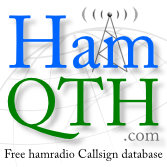Hi All,
Using MSHV (2.60) under linux with Cqrlog logger, has been av bit challenging due to the fact that the cqrlog wsjt-x CQ-monitor window does not monitor UDP packages from MSHV. Logging QSOs from MSHV into Cqrlog using UDP works OK, however.
I am no programmer, but reading a post from PA5KT Henk on the MSHV forum av few days ago gave me a clue. I learned that MSHV uses mode identifiers in header that differs from WSJT-X and JTDX. With this information I ventured into the cqrlog source code that I have downloaded from github, and I think I found a solution.
In cqrlog/src/fMonWsjtx.pas line 1894 onwards converts wsjtx binary mode identifiers to text:
function TfrmMonWsjtx.getCurMode(sMode: String): String;
// function getCurMode converts a wsjtx binary mode in human readable ham mode
begin
getCurMode:='';
case sMode of
chr(36) : getCurMode := 'JT4';
'#' : getCurMode := 'JT65';
'@' : getCurMode := 'JT9';
'&' : getCurMode := 'MSK144';
':' : getCurMode := 'QRA64';
'+' : getCurMode := 'FT4';
chr(126) : getCurMode := 'FT8'; // ~
chr(96) : getCurMode := 'FST4'; // `
//'+' : getCurMode := 'T10';
end;
end;
As I only operate FT8 and FT4, i added two lines to the code.
function TfrmMonWsjtx.getCurMode(sMode: String): String;
// function getCurMode converts a wsjtx binary mode in human readable ham mode
begin
getCurMode:='';
case sMode of
chr(36) : getCurMode := 'JT4';
'#' : getCurMode := 'JT65';
'@' : getCurMode := 'JT9';
'&' : getCurMode := 'MSK144';
':' : getCurMode := 'QRA64';
'+' : getCurMode := 'FT4';
'FT4' : getCurMode := 'FT4'; // For MSHV added by LB2EG nov 7th 2021
chr(126) : getCurMode := 'FT8'; // ~
'FT8' : getCurMode := 'FT8'; // For MSHV added by LB2EG nov 7th 2021
chr(96) : getCurMode := 'FST4'; // `
//'+' : getCurMode := 'T10';
end;
end;
And Viola, it works!
73 de LB2EG Richard




HI!
Pull request to official source added https://github.com/ok2cqr/cqrlog/pull/455
Thanks !
--
Saku
OH1KH
Thanks Saku!
Now I must learn how to code to enhance the main CQ Monitor window to also show the 73 and RR73 lines:)
DX stations that I need for DXCC and band slots seldom call CQ...
73 de LB2EG Richard
HI Richard!
The purpose of CQ-monitor is to show only CQ lines. (less traffic to check). And if you check also "DX" checkbox with CQ-monitor there is again less lines as only CQ callers having different continent than you will be shown.
How ever if you look at DX who seldom or never call CQ you have two choices.
1) First way:
If you know the callsign you can use CQ-monitor with "Flw" checkbox checked and enter the callsign to bottom part of of CQ monitor and be sure that button "Follow" gets green text.
Then you see all the lines transmitted from that callsign at bottom of CQ monitor in the larger column of follow-part. This includes reports and RR73/73 from that station.
To make living easier you can even paint callsign at wsjtx main window with mouse and then drag it keeping left button down and drop it to Follow's calisign column and then click button Follow to green. (one hand operation)
And when you see the RR73/73 line at the larger follow's column a double click over it will move callsign to wsjtx and populate Standard messages, but not start the TX. And this is wjtx property that can not be changed. You have to push Enable TX there to start calling.
2) Second way:
If you do not know callsign, or have several of them to look at, why not trying CQ_monitor's "map" mode?
Check the "Map" checkbox and resize map window to be narrow and high just like band map window is. Map window is meant to show just callsigns transmitting (all of them) with locator and information of their qso state.
Without brackets they calling CQ, with brackets and locator they trying to get qso with someone, or else with brackets they having qso now.
WIth the latest pull request the closing bracket is now replaced with asterisk to show that callsign did sent RR73/73 and so could be ready for next qso.
In addition signal strength and US states can be shown if checked.
And also checkbox "DX" works there dropping callisgns from your own continent away from monitor making DXs better visible.
Also here the double click over a callsign line in Map-monitor initiates wsjtx standard messages and if callsign was calling CQ (without brackets) initiates TX, otherwise you have to push wsjtx's "enable tx" button (wsjtx property).
You can now see certain callsign's RR73/73 with CQ-monitor's "follow", OR all station's RR73/73 from Map-monitor's asterisk *
So where do you need code enhance for?
--
Saku
OH1KH
Hi Saku,
I will give it a try.
Maybe I need to change my operating habits a bit... :)
73 de LB2EG Richard